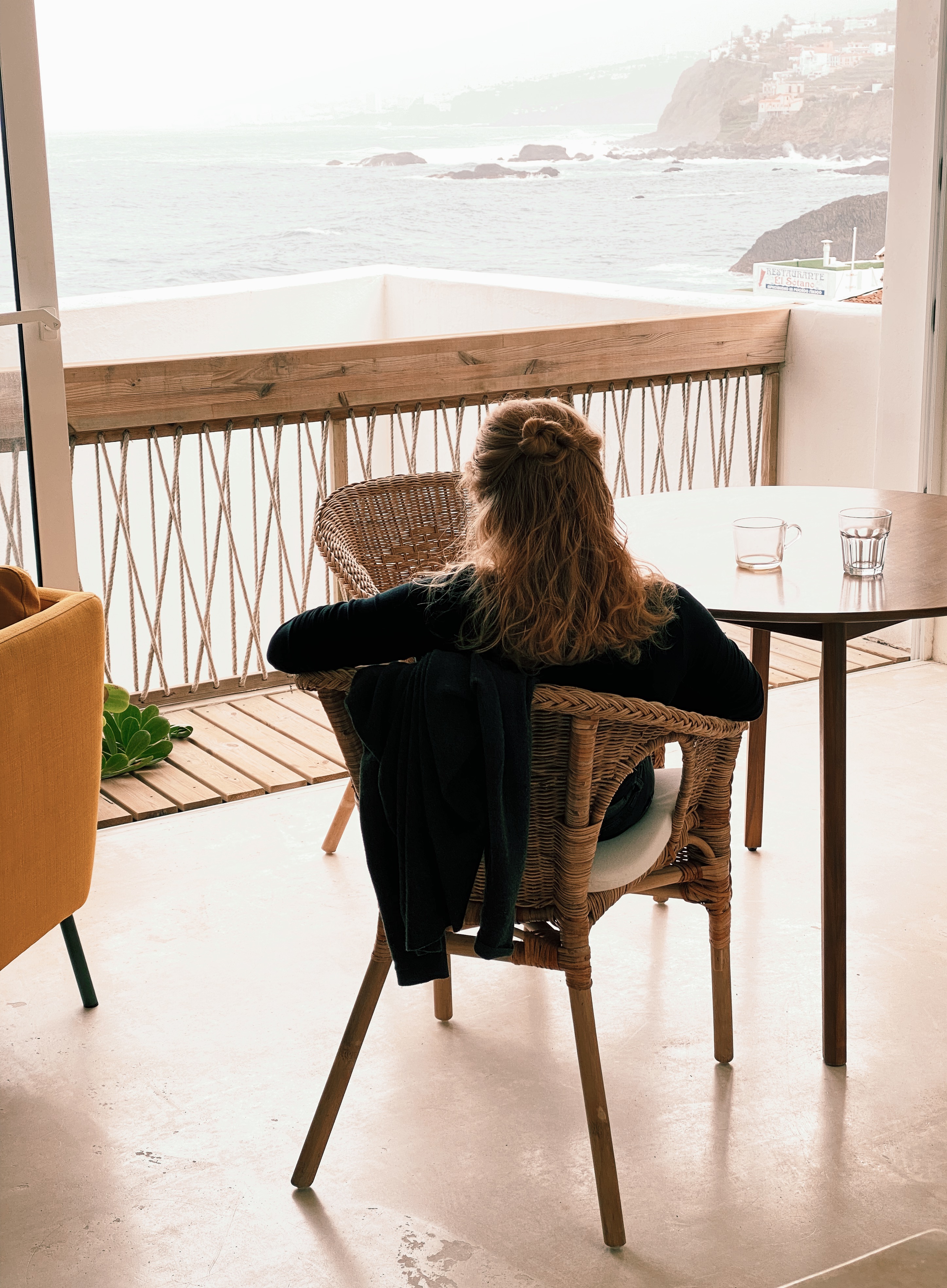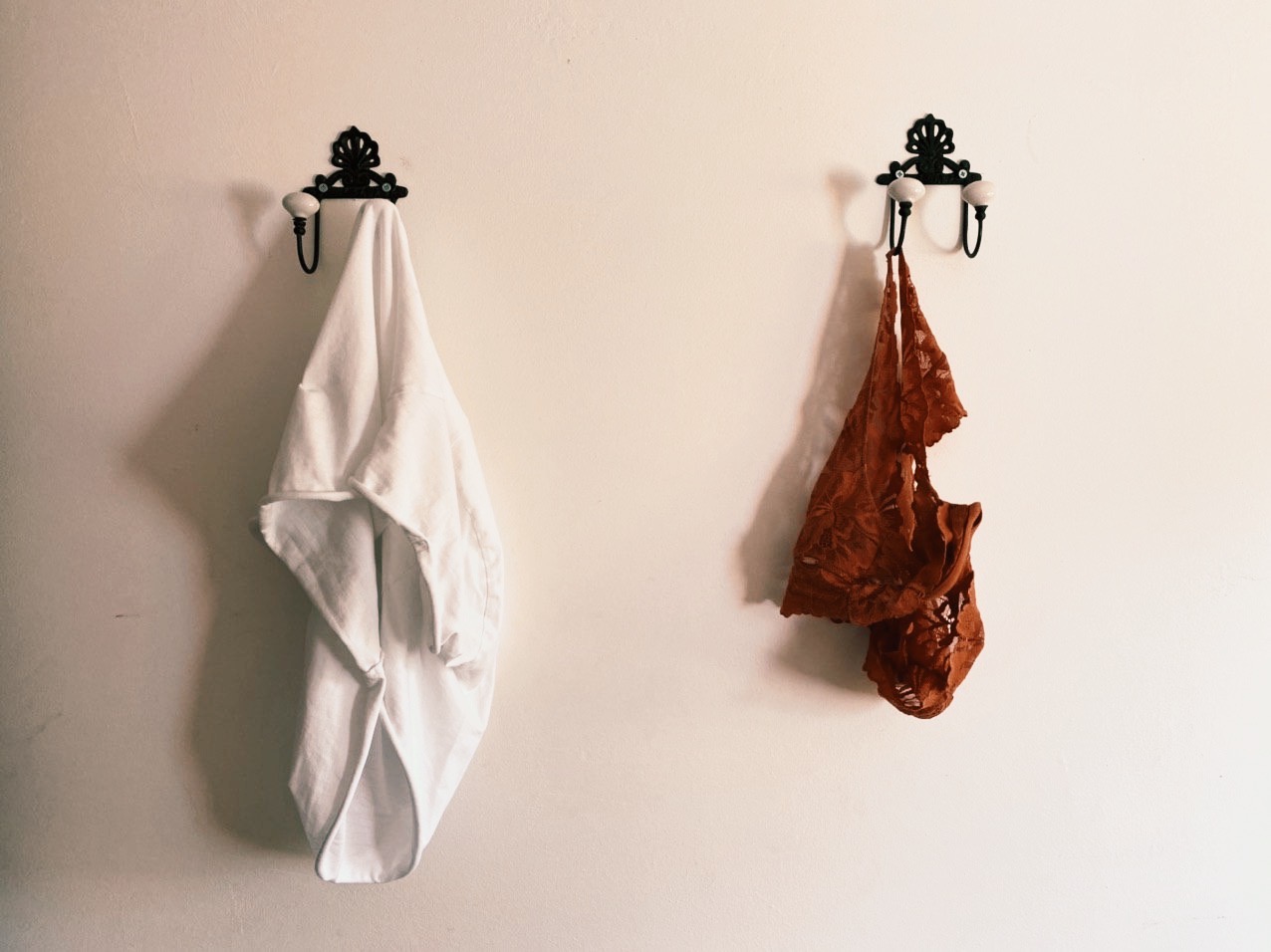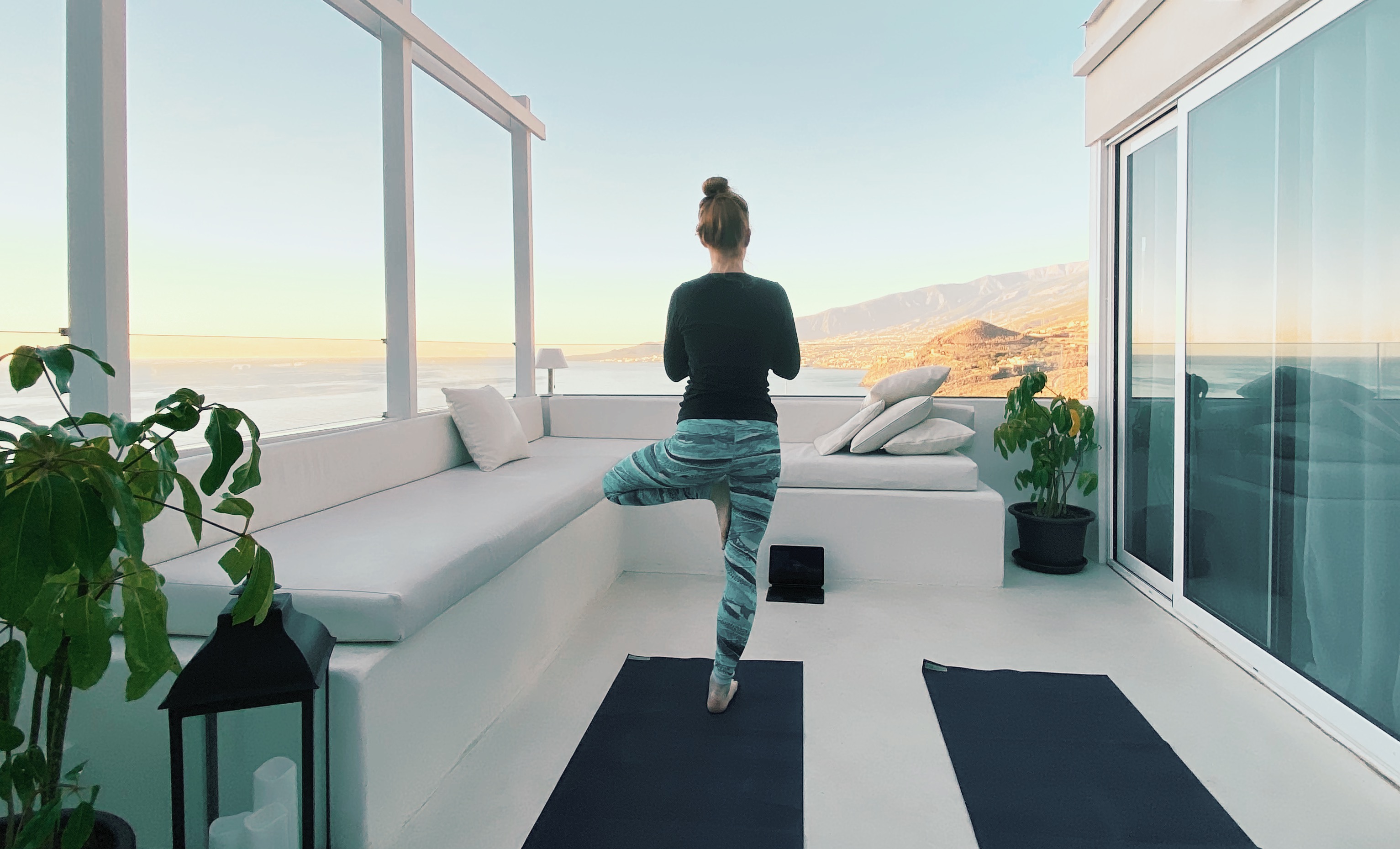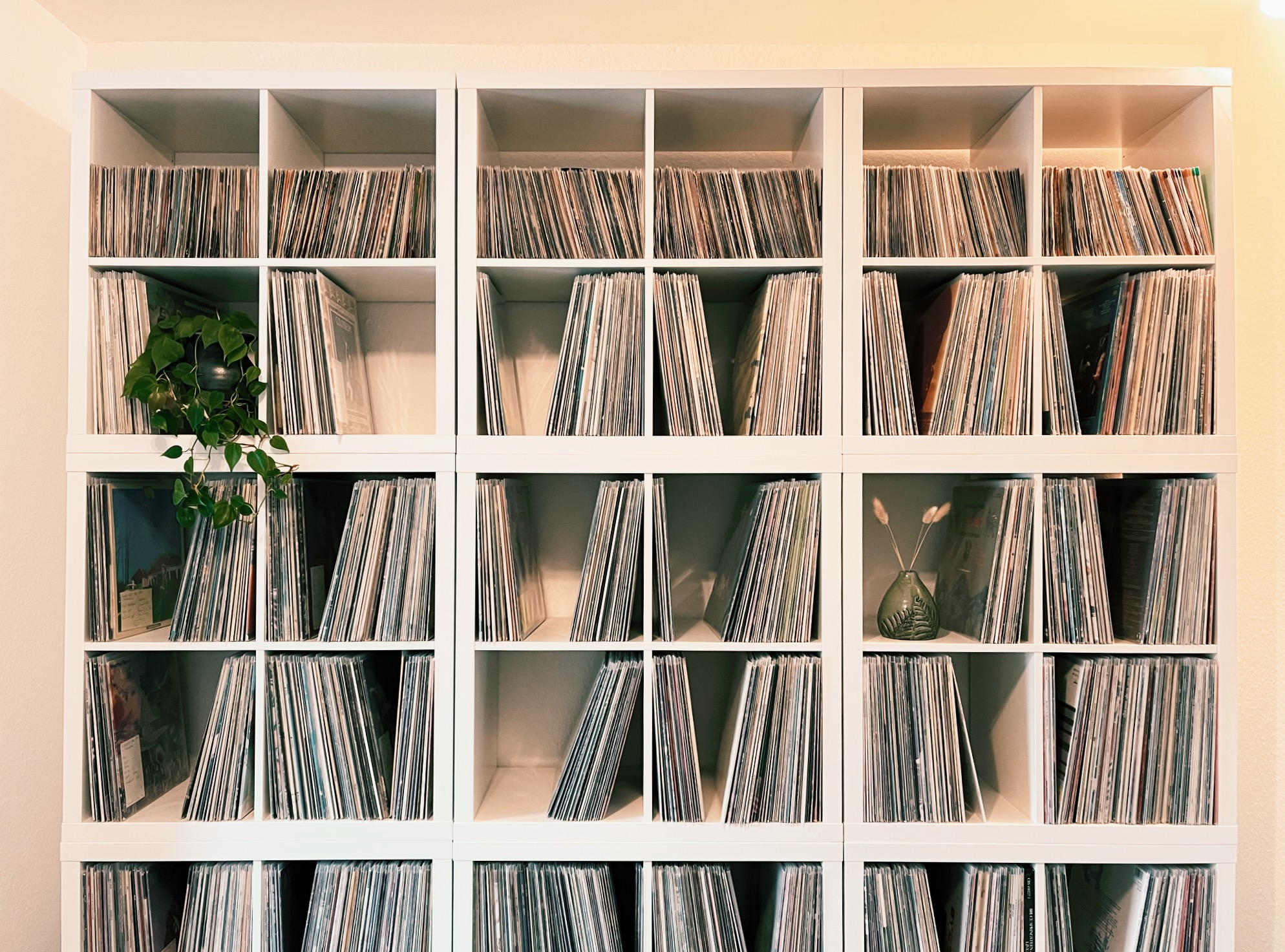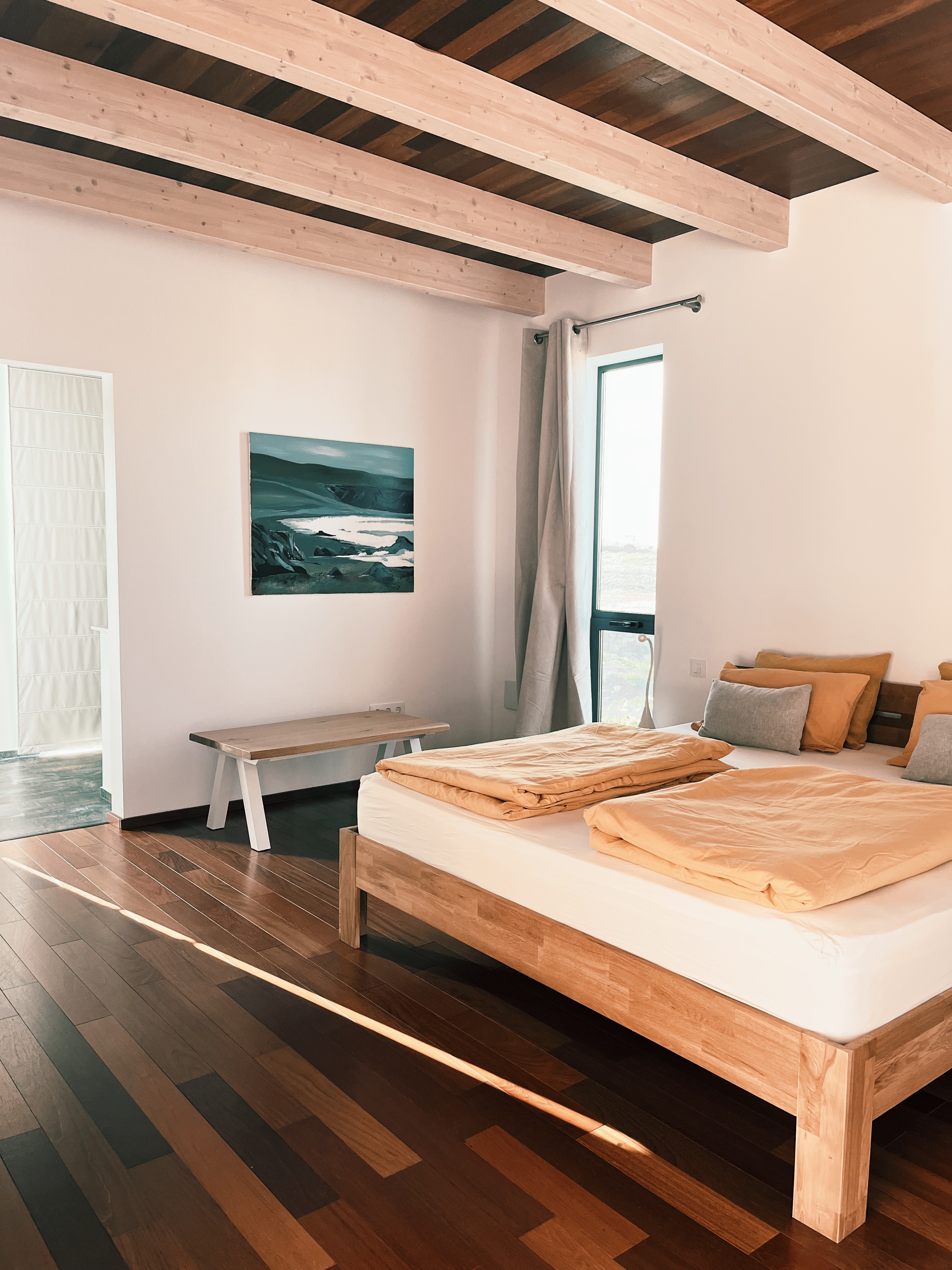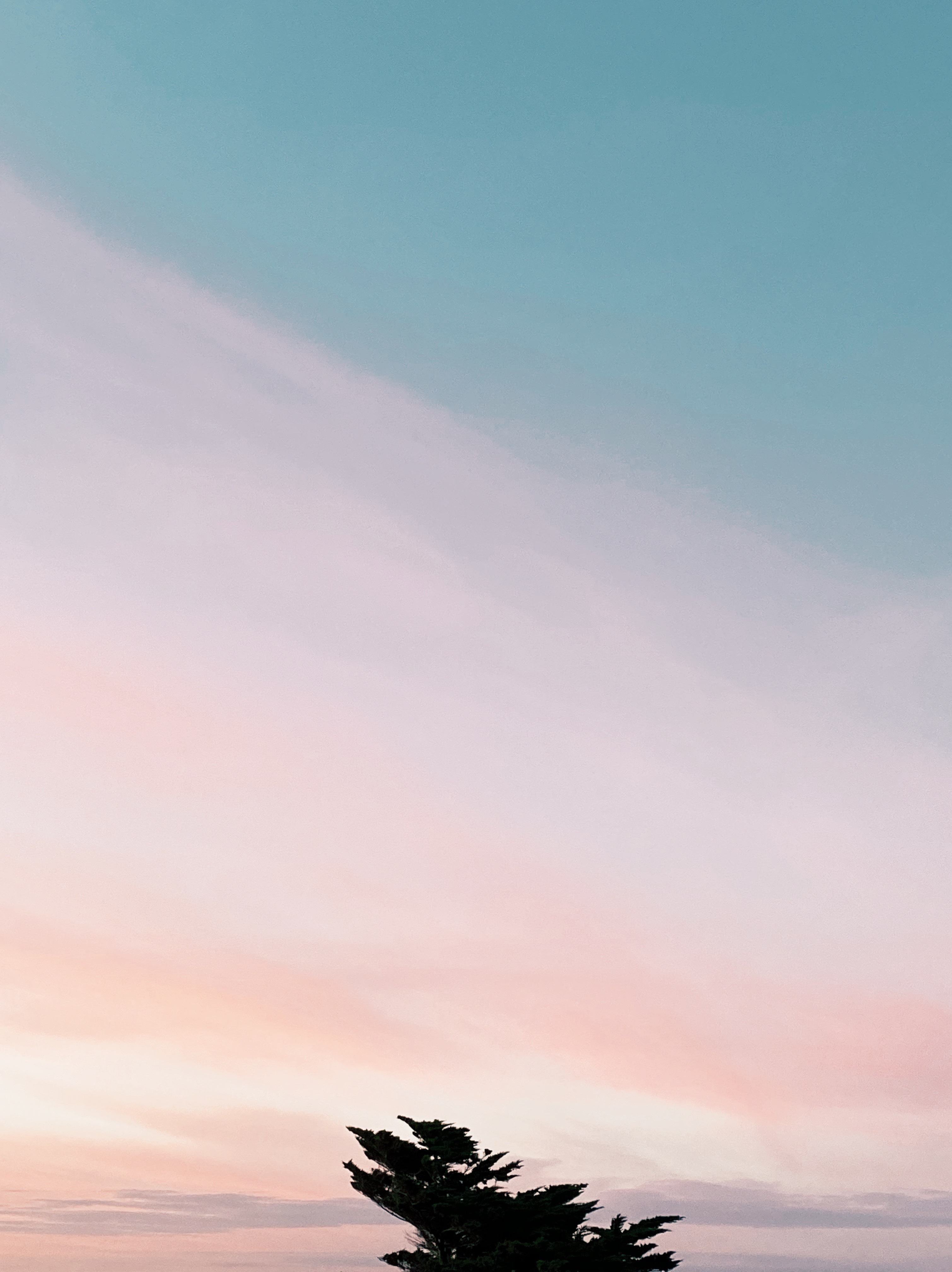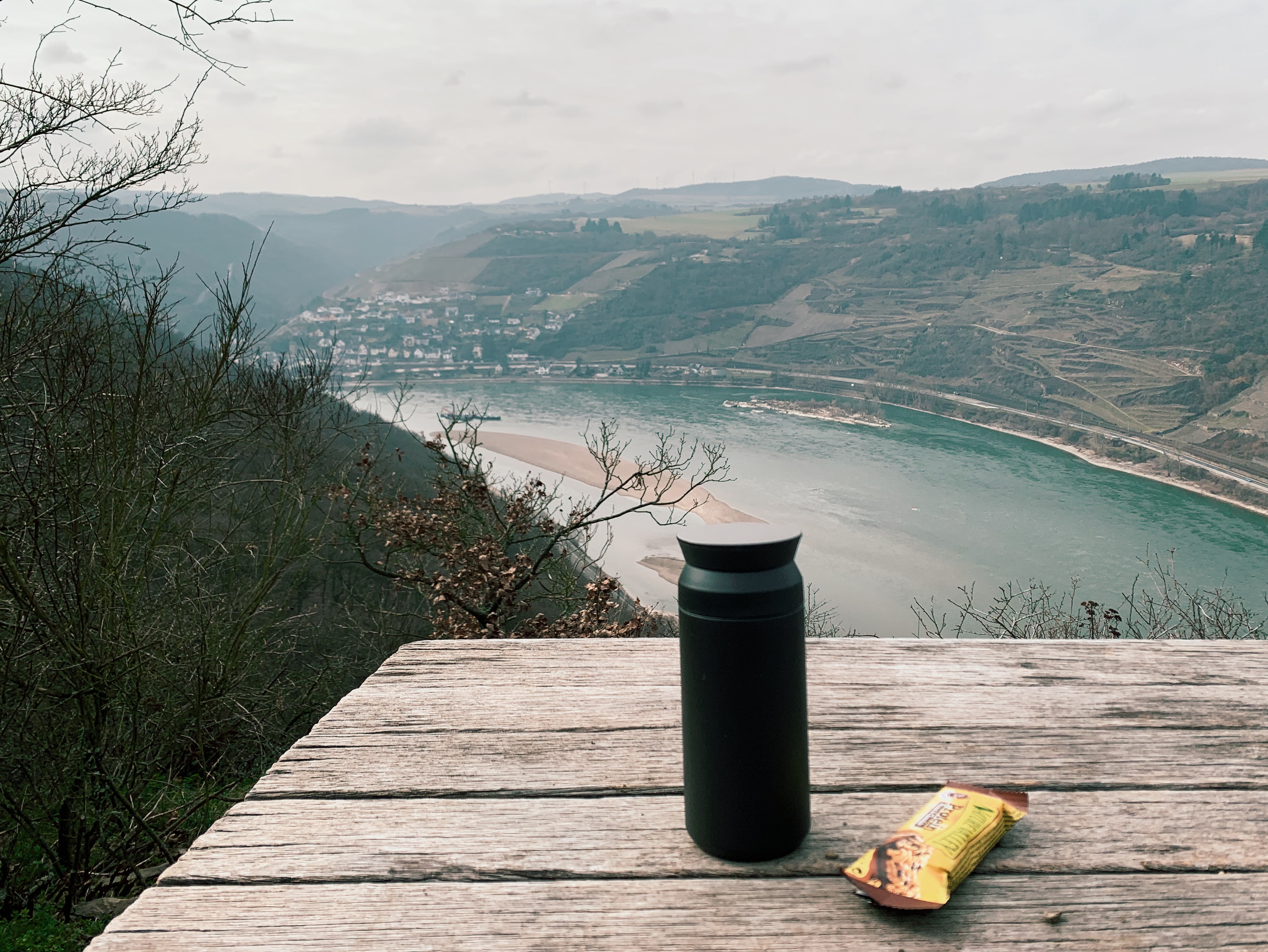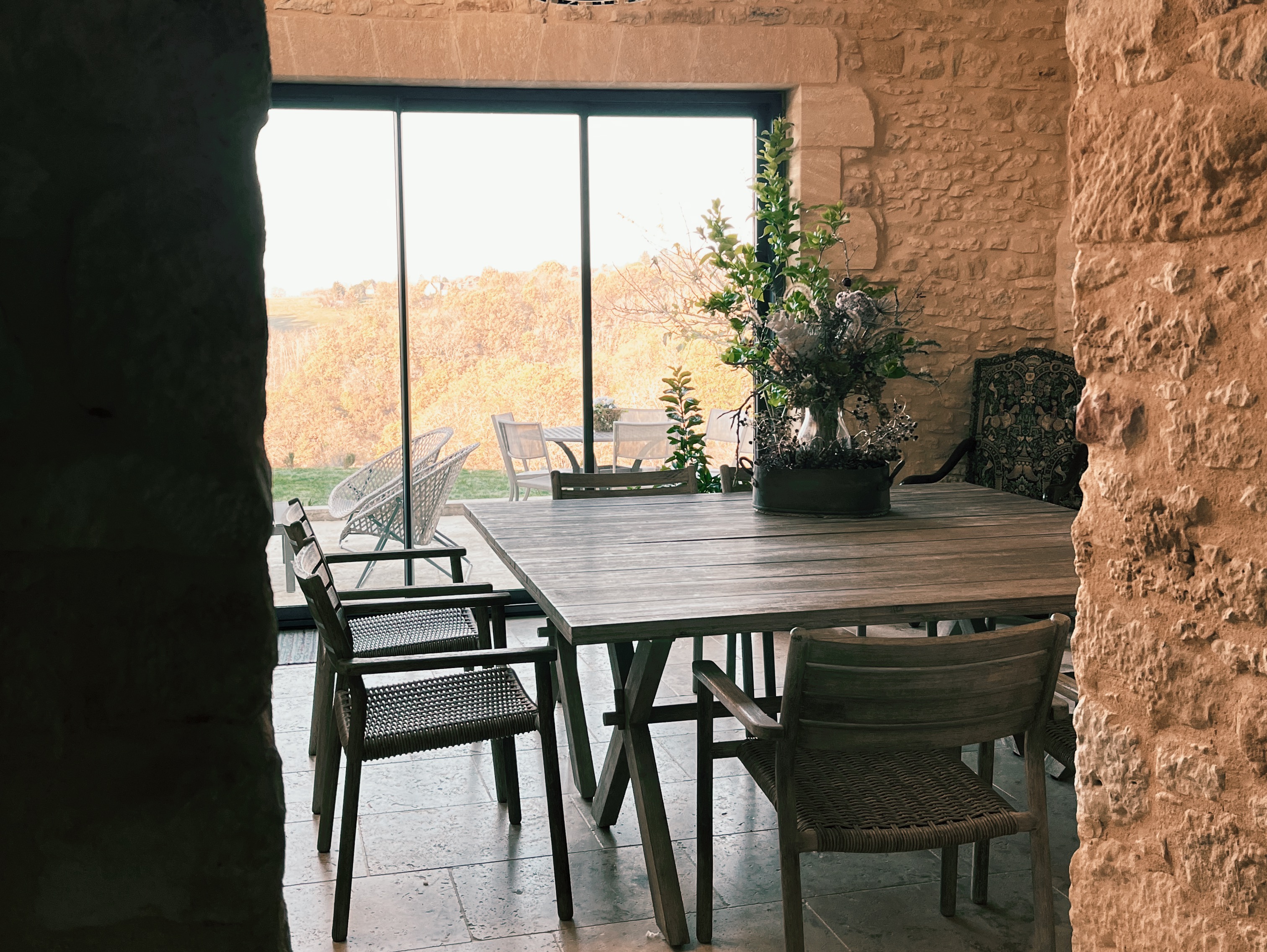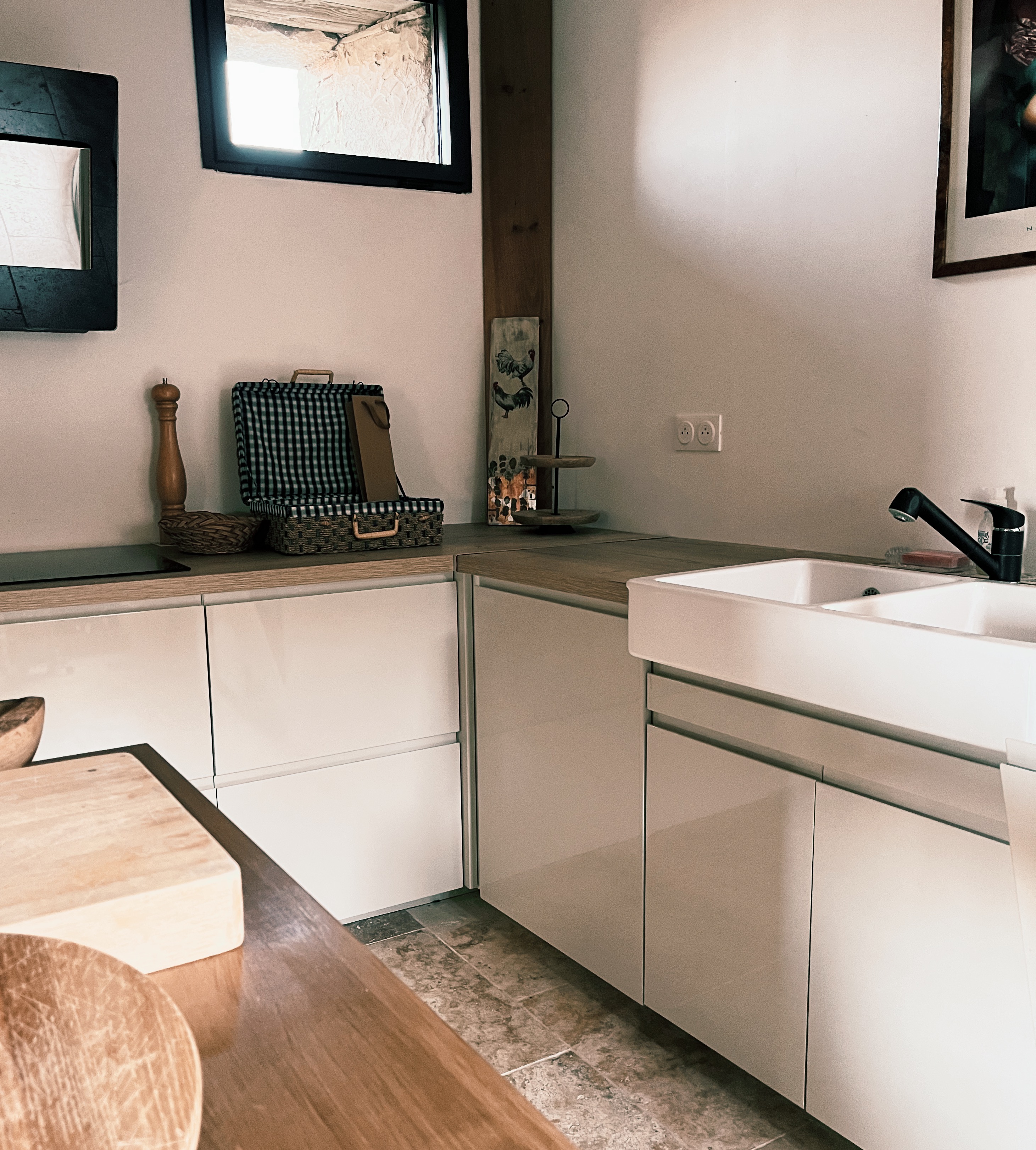Many of us have a lot going on in our lives. There’s always something to do, learn, and achieve. We have so many opportunities to try out new things, buy new stuff, and keep busy all day. While I’m incredibly thankful for this abundance of possibilities, it also sometimes leaves me feeling restless. It’s hard to calm down, relax, and recharge. I even feel drained and irritated more quickly. You might have experienced this before as well. Many of us tend to get lost in all the stuff around us.
It’s obviously not a new problem. I have many friends who experience the feeling of not being in control anymore. The good news is, there are ways to work on this. I want to share with you a solution that has helped me immensely over the last few years. Create more space in your life for what matters.
The theory is simple enough. The practical execution is a bit more difficult, though. It might even sound quite abstract at first, but if you read on you’ll find some tangible tips and tricks on how to get started right now. And before you know it, you’ll feel more in control again. 💪
Here’s what you’ll find in this article:
- Decluttering as a method to create more space in your life for what matters
- 5 easy and fast ways to keep the physical space around you organized
- Easy-to-implement decluttering process, a.k.a. checklist of questions for decluttering
- How to get rid of stuff
- How to store stuff
- Regain control through decluttering
How do you create more space in your life for what matters?
One way to regain control is to be mindful and protective of the spaces in your life. And by that, I mean both, mental as well as physical spaces. Both of them are closely connected. From my experience, organizing your physical space is a bit easier. It feels much more manageable to organize my cupboard drawers than to shut up my mind. However, once you’ve organized your physical spaces, you will be astonished to experience how much this will contribute to calming your mind as well. At least it did for me.
So, a fantastic method to reach more calmness in your life is by organizing and decluttering your physical space(s). The best part about this approach is that it’s fairly easy to get started! All of this isn’t rocket science. And frankly, most of these methods aren’t particularly new. But consciously having them in my toolset and integrating them into my day-to-day routine is what made all the difference for me. Below, I outline the hacks that have worked well for me. I encourage you to try them, see which ones work for you, and bravely dismiss the ones that don’t. This way, you’ll be able to establish your personal set of tools that will help you feel more in control every day.
Here are 5 easy and fast ways to keep the physical space around you organized
Give everything in your home a designated space
It’s so simple, yet so brilliant! If your stuff has a “home location” it’s much, much easier to return it there after you (or someone else in your household) used it. I now know why my mom always asked me to put the scissors back where they belong. Only took me about 30 years, so at least I’ve got that going for me… Anyhow, the thing is, you can save yourself the mental overload of having to decide where to put something every time you’ve used it. Our decision-making muscle also gets tired, so it just makes sense to save energy and willpower for the decisions that actually matter. And almost as a bonus, you won’t have to look for your stuff and get angry at yourself or anyone around you next time you need it.
Play a game with yourself
When we were kids literally everything was a game! From eating only when airplanes deliver the food right into your mouth to jumping from sofa to bed and back because the floor is lava. For some reason, we don’t do that as adults anymore (at least not all the time). But it can make forming habits so much easier. Returned something to its designated space? Yay, you just earned 10 points! Depending on how competitive you want to get you could even keep score with your other family members. Or you might play a game of “take it home” with your kids (or parents) every night before you go to bed. You could crank up your favorite song, dance around the house, and challenge yourself to return everything to its place before it ends. Just get creative and do whatever feels most fun to you. If it’s fun you’re more likely to do it again. It might feel a bit silly at first, but gamification is a huge driver in learning. You know this if you’ve ever used Duolingo to learn a new language. Why not leverage this trick to build the habits we want to form in our day-to-day lives as well?
Reduce the number of handlings
I’m sure you have heard the saying “Don’t put off until tomorrow what you can do today”. Well, I’d take that even further: Don’t put off until later what you can do right now! If you use something, put it back right away when you’re done using it. Don’t leave it lying around until you have to clean it up later. The classic example for this one is to put the dirty dishes into the dishwasher directly rather than on the counter where they’ll sit all day. It, for one, saves you time. Yeah, okay, probably just a few seconds in this example. But it adds up. Secondly, it saves mental processing and switching costs. If you’ve put the dishes into the dishwasher right away, you don’t need to think about them anymore. It’s done. They’re not lingering in the back of your head, nagging you all day long. Yet another benefit: It reduces visual clutter. If you don’t leave stuff lying around, your mind will also be less distracted.
Leverage storage solutions to reduce visual clutter
Another way to reduce visual clutter is to use storage solutions. Rather than piling your dirty laundry on that chair in the corner (I know you have one, we all do), get a laundry basket for your bedroom. There are countless areas in your house where you can leverage some sort of organizing system. Your kitchen drawers, closet, the cable clutter behind your TV, your food cupboard, cleaning stuff, attic space, … the list goes on and on. There are a lot of ideas and creative solutions out there on how to organize these spaces. Try and focus on the ones that visually reduce clutter. For example, use a wardrobe with doors you can close. Don’t use clear boxes if they are stacked outside a cupboard or closet.
It’s important to note that also decorations and knick-knacks that we think we like can be perceived as clutter by our minds. I’m not saying we should all live in sterile, laboratory-like rooms. But I do want to encourage you to be a bit more mindful about how much space the items in your house take up. Maybe you can exchange just a few items for more free space. All this helps your mind to calm down by having to process less when you move around your house.
Leave space for possibilities to happen
This is probably my favorite one. If every inch of space is crammed with stuff, there’s no room for new things to happen. But if you leave some space, possibilities can arise. It’s a concept I picked up from yoga and it was quite a realization for me. Since then, I always leave some space in my suitcase when I travel - what if I pick something up on my journey? I also keep one drawer in my cupboard empty. It just feels great to have some extra space. This is applicable to your headspace as well. Meditation can be a tool to create space in your mind free of thought. But even just not planning your day down to the last minute can create immense freedom. Just leave a few slots in your diary free and you’ll see that after a while, new possibilities will arise.
One of the key challenges many people experience with keeping the physical space around them organized is that there is simply too much stuff. It gets overwhelming and feels like it’s impossible to get on top of things.
The easiest solution to this challenge is getting rid of stuff. I say “easy”, but I know it’s really not. So, let’s take a look at how to do it and maybe even reframe your thinking about decluttering a little bit.
Here is an easy-to-implement process to start decluttering and create more space around you
I used to already break a sweat if I only heard the term “decluttering”. I’d find any excuse to not start today. Or instead of actually throwing stuff out, I’d just move things back and forth between different locations. Until a few years back, a friend told me something that kind of made all the difference. When you dispose of stuff you don’t need anymore, you’re not getting rid of something. You’re actually creating something. Space! Now it’s just a question of how much you value space in your life. Wow. 🤯 I value space in my life a lot. It gives me freedom. It enables my mind to calm down. It creates room for new things to happen.
That’s why I think it’s so important to focus on only keeping the items in your immediate living space that you regularly use, need, and enjoy. What “regularly” means is up to you to define. It depends on how much you value the space around you. I created a simple process to help you decide on which items you can get rid of to create space around you.
So I wanted an easy-to-implement process I could use whenever considering whether to keep an item or not. Or reframed: Whenever I wanted to create more space. That’s how I came up with a decluttering flowchart or decluttering decision tree.
A simple decluttering flowchart
This is a decision tree or a checklist of questions you can ask yourself when decluttering (or before purchasing an item).
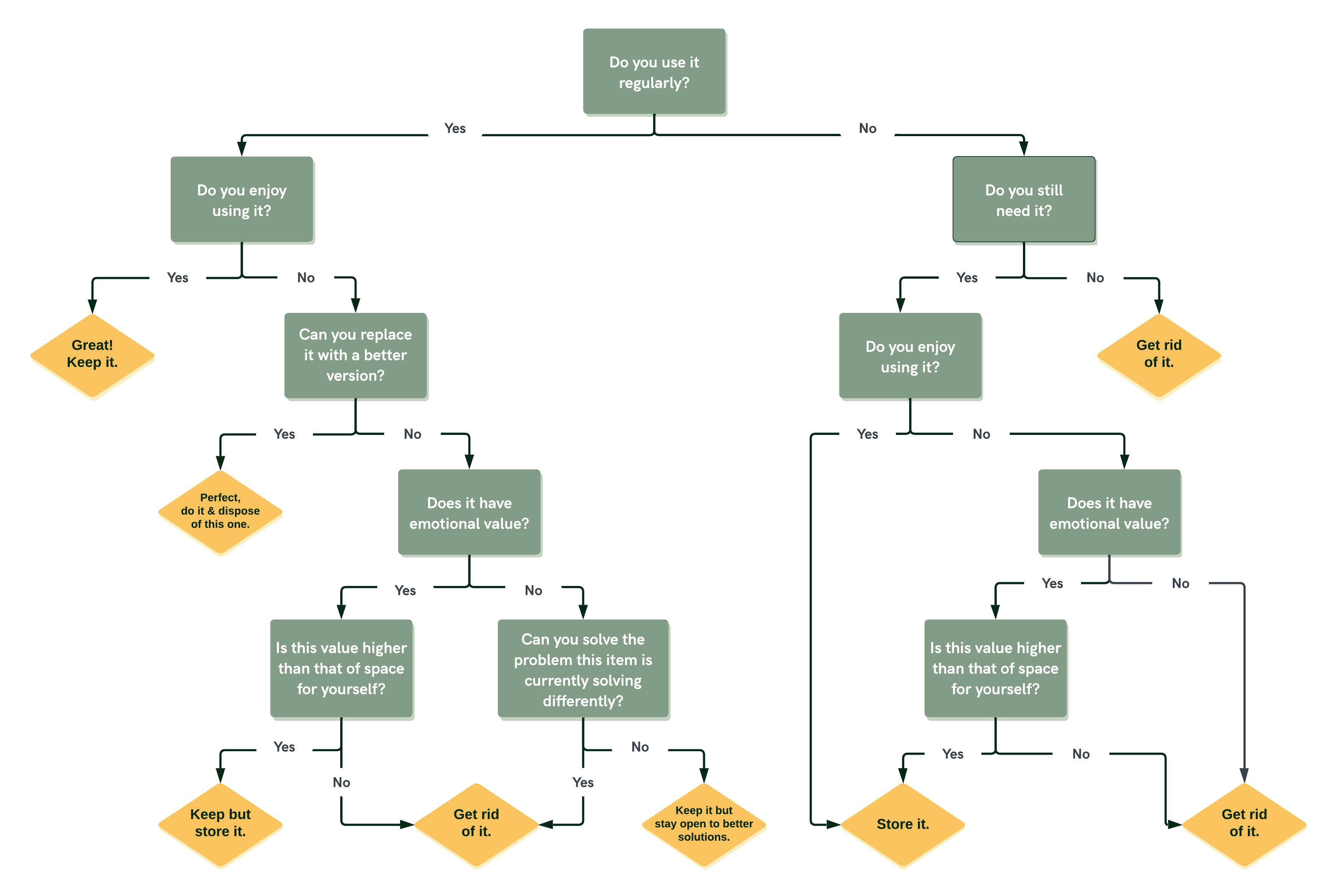
To make this a bit more tangible, let’s go through it with an example.
There’s this little tea stove that’s been sitting on my shelf.
- Do I use it regularly? No. Actually, I haven’t used it in 3 months.
- Do I enjoy it? Actually, no, my teapot doesn’t really fit well on it and it drives me nuts! But I also really like my tea to stay hot while I sit in front of my computer.
- Can I replace it with a better version? Maybe, but actually, I don’t want to spend money on another tea stove right now. So, no.
- Does it have sentimental value? I got it as a present, so I feel a bit bad getting rid of it. But then again, the person who gave it to me wanted to make me happy. I’m not happy when I use it. Plus, do I constantly think about all the gifts I gave to other people? Neither do they. So… no.
- Is there any other way you can solve the problem this currently solves? Actually, yes! I want my tea to stay hot. So I could just put it in my tumbler, which I normally use to take tea to work. I love this thing, it feels nice, looks beautiful and it works amazingly.
Now I can get rid of the stove. And just use my tumbler indoors as well as outdoors. Yay. 🙃
How to get rid of stuff?
Now that you’ve got some items you want to remove from your home, you’re facing the next challenge: How?
I feel you, this is a tough one. I hate wasting stuff. Especially if it still “works”. It used to take me ages to move from the decision of disposing of an item to actually getting it out of my house. Here’s another little process, that helped me to overcome this challenge. Once you’ve decided to dispose of an item, here’s what you can do with it:
Firstly, ask yourself if the item is still in good shape. As in, if you’d get that thing from a friend would you be like “Oh wow, sweet, I can use that for xyz right away!” If not, throw it out. Just do it, there’s no point in cluttering someone else’s space with a useless item. If it is in good shape, you can make someone else happy with it.
Sell it on a second-hand market
It’s a really good feeling if something you valued once finds a new home where it can make someone else happy. There are many local Facebook groups, yard sales, or online second-hand markets you can use to sell stuff. But don’t kill yourself over it. Take some decent pictures, make a short description, and put it online. If it’s not gone after 2 weeks, proceed with one of the other options. Be strict with yourself here.
Ask friends and family if they need it
It’s always nice if something great that you have but don’t use finds a new home. Even better if it’s valuable to someone you know. Just make sure to not put pressure on anyone to take something they don’t want or need, especially if they’re struggling with similar issues.
Donate to a local charity
Donating is a great way to give your things a second or third life while at the same time helping out someone. Just make extra sure that the item is still in good shape and useful to someone in need. Shelters or second-hand stores are already struggling. We don’t need to make their lives even harder by flooding their donation stores with junk they can’t pass on to people in need.
Throw it out
It’s okay to sometimes throw out things that are theoretically still functioning. If you’ve tried to sell or donate it, you’ve done everything you could to act ethically and sustainably. Now it’s time to throw it out and move on.
How to store stuff?
Even if we aim to reduce the number of things in our lives to create space for what matters, it’s important to have the option to store some of the items we need and want in our lives. I definitely want my hiking gear in my life. But I don’t really use it in my day-to-day life. So I store it in the basement. Same for my camping or diving gear.
If that sounds familiar, I can highly recommend keeping a thorough inventory of the stuff you have stored somewhere. It can be as simple as a digital list (or a paper one if you prefer) of what items are stored in which box and where that box is located. It does take a little bit of time and effort to set this up, but believe me, this will help you so, so much in the future. If you need a more tangible example of how to organize your storage, take a look at how I store my hiking gear.
The key when storing stuff is to be mindful of what you store. Many people tend to just relocate the problem. Instead of having clutter in your living room, you move the clutter to your basement, attic, or a random storage location. So, even for stored items, make sure to regularly go through the decluttering process above. If you haven’t been skiing for 15 years, it might be likely that you won’t do so in the next 15. And even if you do, the gear you have will probably be outdated or broken or would need quite some investment to get it functional again. You might be better off just renting some gear. It all comes down to the question from the beginning. How much do you value space? Is keeping some item you might, eventually, unlikely but possible, at some undefined point in the future, use worth sacrificing the physical and mental space you could use for other things that matter to you?
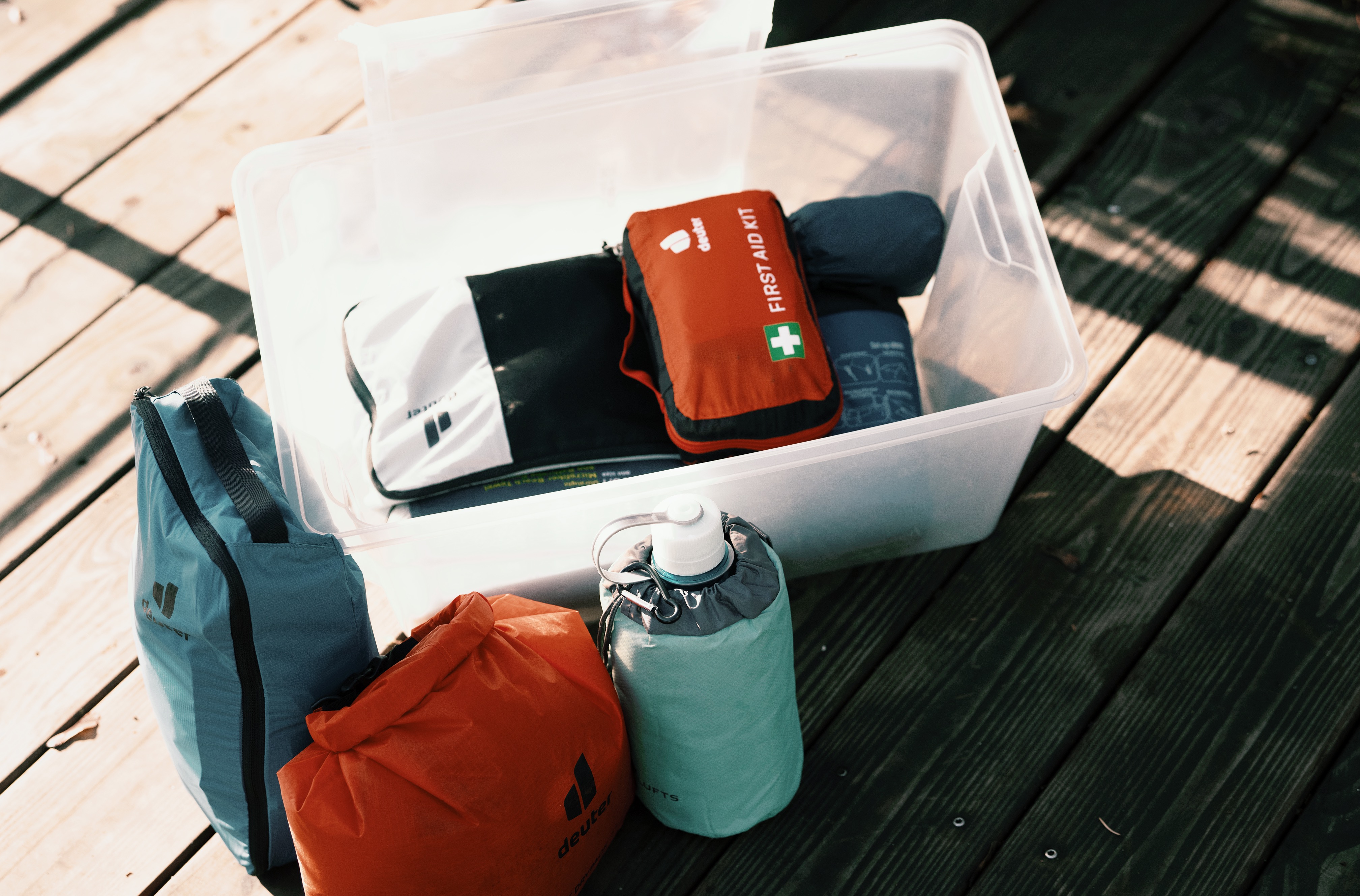
Regain control through decluttering
Within our busy lives, it’s easy to lose track and feel like we’re getting buried with stuff. One way to take back control is to be mindful and protective of our spaces, both physical and mental. By organizing your physical space, your mind will also be able to calm down more easily. It all comes down to answering this question for yourself: How much do you value space for possibilities to happen in your life?
And while creating space does take a little bit of effort, once you get started, it’s very rewarding and SO worth it in the long run. I hope my tips and hacks will inspire and help you to get started to create space around you for what matters.

